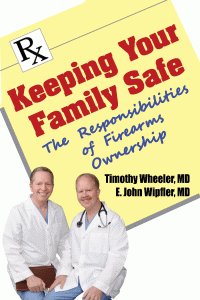Like many people, doctors work to keep up with the torrent of new information in their field. One time-tested learning resource for doctors is the medical journal. In addition to general medical journals that cover a wide spectrum of new medical knowledge, most doctors regularly read at least one journal dealing only with their own specialty.
The American Academy of Pediatrics journal Pediatrics is the go-to learning resource for busy pediatricians. They depend on it to help them meet the challenge of caring for sick kids. This month, however, the editors at Pediatrics handed out a big dose of anti-gun hype, hoping their readers will swallow it whole with no fuss. The authors of this anti-gun article hardly even pretend to offer any new scientific knowledge of value. Instead, they follow a well-known technique of medical gun control advocates—KidsNAntigunHype.
KidsNAntigunHype can be defined as an article published in a scientific journal showing no new or helpful findings and designed to shock readers into mentally associating guns with the death of children. The article in the November 2013 issue of Pediatrics is “Gunshot Injuries in Children Served by Emergency Services,” by Craig D. Newgard, Nathan Kuppermann, and ten other authors including Garen Wintemute, a specialist in this type of political writing. The authors conclude “Despite being less common than other injury mechanisms, gunshot injuries cause a disproportionate burden of adverse outcomes in children, particularly among adolescent males.”
In other words, of all the ways children can be injured, gunshot wounds are one of the worst. Did it really take twelve doctors studying 50,000 injured children (only 1% of them gunshot injuries) to arrive at that breathtaking conclusion? No, but those twelve doctors wanted their name at the top of a hit piece against guns masquerading as a serious scientific paper.
The nothingness of the paper is staggering. Readers looking for guidance will find only a flurry of statistics heavily larded with the turgid technical writing medical authors are so fond of. One can read with great concentration from beginning to end, parsing every word, only to be left with the uneasy feeling that that’s all there is. Because that really is all there is.
The authors even admit that
a) gunshot injuries in children are uncommon
b) gunshot injuries in children occur mostly in the 15 to 19 age group (83% of the sample they studied)
c) they did not determine intent in any of the gunshot injuries. In other words, the authors don’t know how many were crimes committed by gang-bangers.
As we warned earlier this year, we can only expect more KidsNAntigunHype in the future. It will be incumbent on all doctors to recognize it when it appears in their medical journals and to expose it to editors, colleagues, and their patients.




